Bharatanatyam dancer and founder of Varna Arts Academy, Smitha Madhav is a complete package in herself. She is a Bharatanatyam dancer, Carnatic singer, Nattuvangar and Choreographer. Speaking to Natyahasini, Smitha Madhav gives 100 percent credit to her mother for what she is today. She says that learning dance wasn’t her choice. “My mother learnt Carnatic music, my brother learnt Veena, music was there in our family. When my mother had me, she thought of fulfilling her aspirations through me. She put me in dance as she herself was interested in dance and was keen that I learn it. The thought of becoming a professional dancer came much later. That is how I started learning dance,” says Smitha.
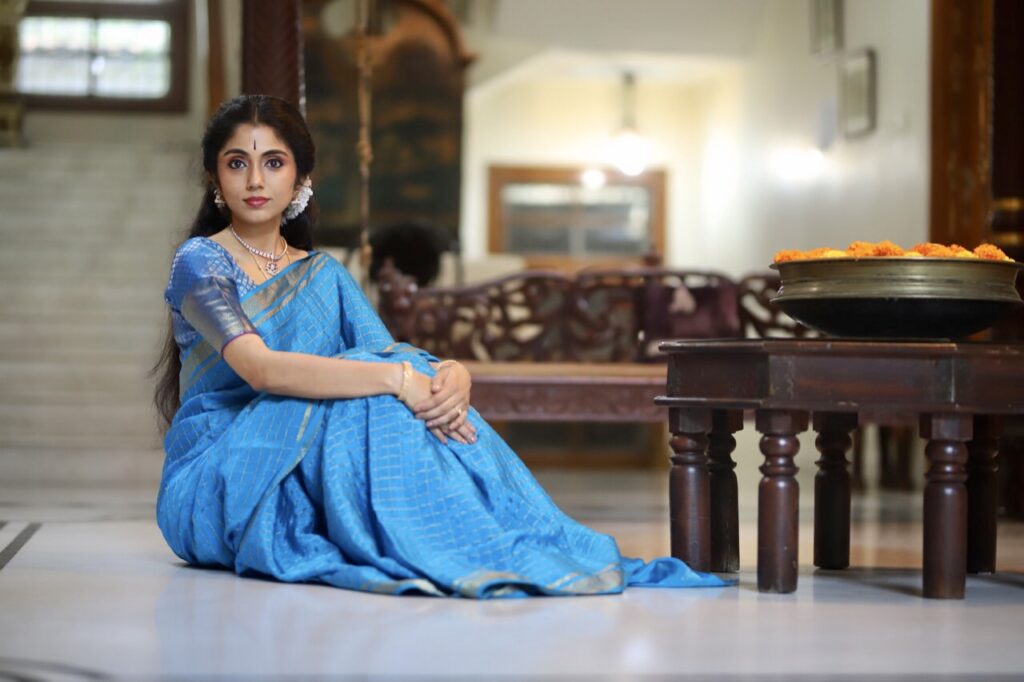
The Varna Arts Academy founder says that her first Guru was Pasumarthy Ramalinga Sastry (Disciple of Smt. Rukmini Devi Arundale), a graduate from Kalakshetra, Chennai. “Pasumarthy Ramalinga Sastry would come to teach me and two of my cousins in one of the largest rooms in our house. I shifted to learning dance under Nrutya Choodamani Rajeswari Sainath akka in 1993. She was my second guru,” she says. The dancer has also received training in Abhinaya from Bragha Bessel.
Smitha performed her Arangetram at the age of 10 at Ravindra Bharathi, Hyderabad, thanks to her guru, which landed her a film opportunity. “At that time there was no social media and very few newspapers. My Arangetram received a lot of media coverage as there were fewer arangetrams those days. The director of Bala Ramayana MS Reddy garu, who was looking for somebody to play Sita, came across my picture and arangetram in Enadu paper and began looking for me. He met me in October 1995. After that film, I got many offers as a child artist in several films and also as a leading lady after a couple of years, but when I read the scripts, I felt I didn’t see myself in those roles,” says the dancer. She states that she certainly didn’t get any film offers from K Viswanath Sir. “Probably, when he was around, I was young and may be after a couple of years, he stopped making films.”
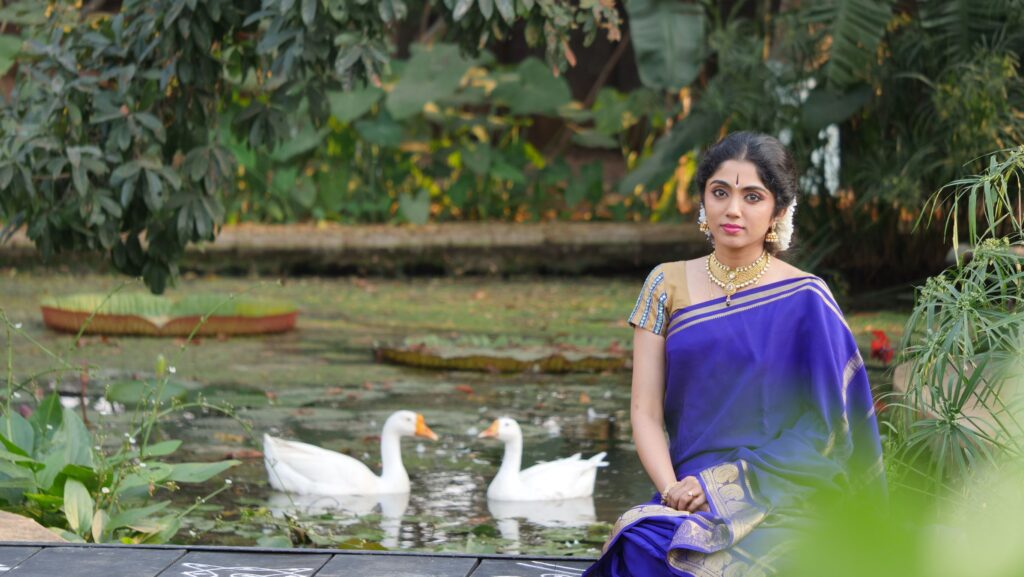
Good Fortune: Smitha shares that she began learning Carnatic music when she was 16 years. She had the good fortune of being trained by one of the Hyderabad Sisters, Sangeetha Choodamani Kum. Lalitha, the torch bearers of the Alatthur Baani, known for its strict adherence to tradition. “Those days Lalitha amma used to teach in Bhakta Ramdas Music & Dance College at Ramkote. The classes there were held from 1.30 pm – 6.30 pm and nobody would come till 3.30 – 4pm. I was lucky to learn with Lalitha amma and it was mostly one-on-one classes as my Intermediate classes and Law classes would get over by 1.30 pm and I would go directly to the Music college. Learning under Lalitha amma were Golden days. She was much more than a Guru. I honour her friendship. She was a noble soul. I miss her terribly, in short, she gave me the gift of music,” admits the vocalist.
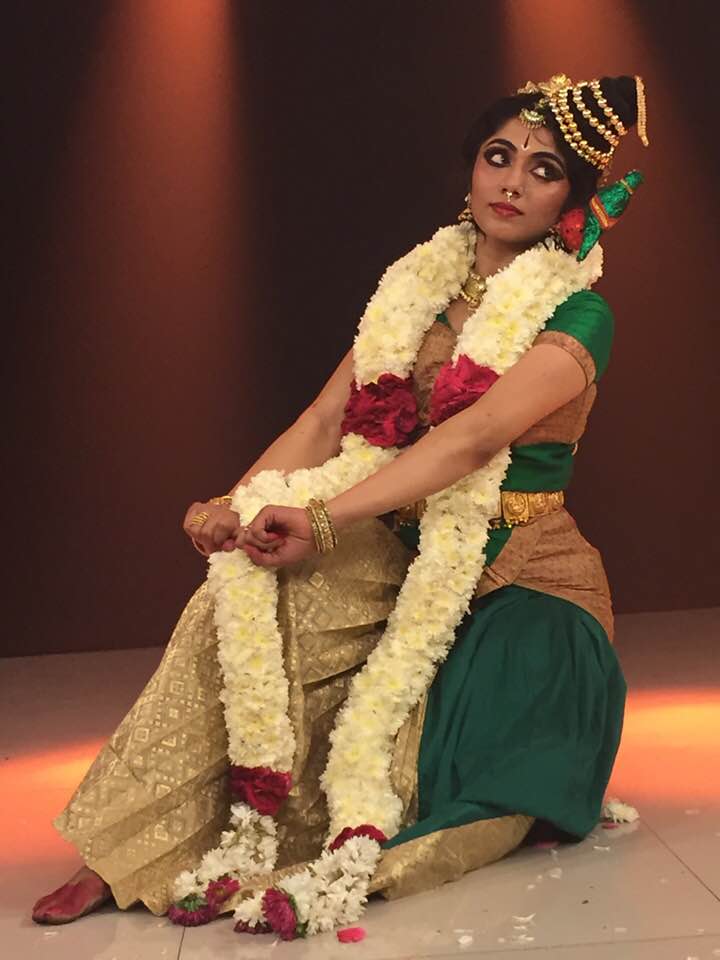
The Bharatanatyam dancer acknowledges that she is extremely grateful to learn both. “Today, it has made my life much easier. I have a great advantage when I dance or even when I sing. My dance training holds me in great stead. I don’t want to be called a singer-dancer or a dancer-singer. I am a performing artiste,” she says firmly. She quickly adds that artists belonging to hereditary families don’t distinguish between a singer and dancer. If you are a dancer, you must know singing. If you look at senior dancers like Dr. Padma Subramaniam or Dr. Vyjayanthimala, they can sing and dance. Even M Subbalakshmi was a dancer, before she decided to follow singing. And she is my idol. Even the well-known Bala Saraswathi amma had received Sangeet Kalanidhi award for her singing, apart from being a great dancer. In my mind, dance and music is one. Music is the mother of dance,” she says.
Smitha, who was awarded the Pratibha Scholarship by the Government of Andhra Pradesh for all five years of the law course, and is a lawyer enrolled with the Bar Council of India, doesn’t practice law. “I don’t practice law as it involves trusteeship affairs of another person and I can’t do justice as I am involved in Arts fields and I don’t want to be a parttime lawyer.”
Credits Her Mother: The professional artist gives credit to her mother for managing academics and arts. “All this was possible, thanks to my mother’s super parenting. Her effort was 95%. She gave up her career to take care of me. Also, as a child, I didn’t have any distractions. I didn’t hang out with friends. Could devote my total attention to dance because of my mother’s sacrifice. My mother says that all this was possible thanks to my father and brother’s support.” However, the dancer advice to kids’ is ‘Don’t get distracted’ and her request to parents is to support their multi-talented kids. “My mother being a teacher would read and then tell me. Even today, my mother helps me,” she says.
Smitha’s Varna Arts Academy has branches in Chennai, Hyderabad, Vijayawada and overseas. “Yes, I have branches in the country and abroad and there is this special Eklavya batch of talented students stationed in Manjikuddi, who take classes twice a week online. I am connected with my students 24×7. The technology has helped in many ways to bridge the gap. Whenever they come face-to-face, I set aside time for them. I am available to my students and their parents 24×7. I have a personal rapport with all my students,” says the dancer, adding that till date 25 students have performed their Arangetram from the academy.
Revealing the speciality of naming her Academy, Smitha says: “Varna means colour and Arts adds colour to life. There is Varnam in Kutcheris and also in Bharatanatyam Margam. Hence the name Varna Arts Academy.”
Recording Projects: The vocalist has lent her voice to various recording projects in different languages. Some of her recording projects include – Annamayya Bhavamrutham, Nandakam, Vaikhanasa Stotram, Vishamakkara Kannan and several compositions of Annamacharya, Tarigonda Vengamamba and slokas for the TTD. “I am releasing some rare Annmacharya Keertanas that we students of Lalitha amma had the opportunity to sing along with her which was a very beautiful experience. These were sung when Sripada Pinakapani Sir turned 100. I am just recording them and releasing them now,” she says. Smitha also has plans to release a Surdas Bhajan on the visually impaired day. “The ideas come to me. The Hindu calendar has so many festivals and depending on the significance I record and release. At the end of October, I know Dhanur masam is close-by and plan accordingly, but I don’t flog myself to think. Luckily, good ideas keep coming my way,” says Smitha.
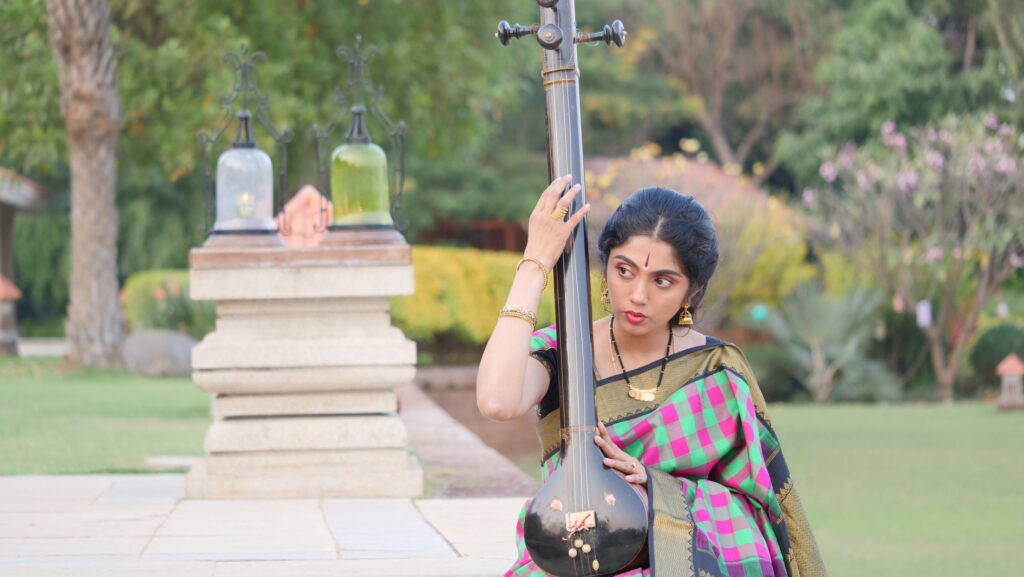
In a day, how many hours, she practices and teaches, the dancer says that teaching hours have become longer as in online classes, many students can’t be accommodated. “Teaching is also practice and the whole day, we are teaching and practicing,” she says. The dancer feels that dance certifications are not necessary to perform. “But these days, parents are interested and they want their children to have certifications. We train students for the various certification exams. One must remember that possessing a certificate doesn’t help you in performing better.” She states that by becoming a dance teacher, one can manage, but one has to keep reinventing oneself. “But managing as a professional dancer would be challenging,” she says.
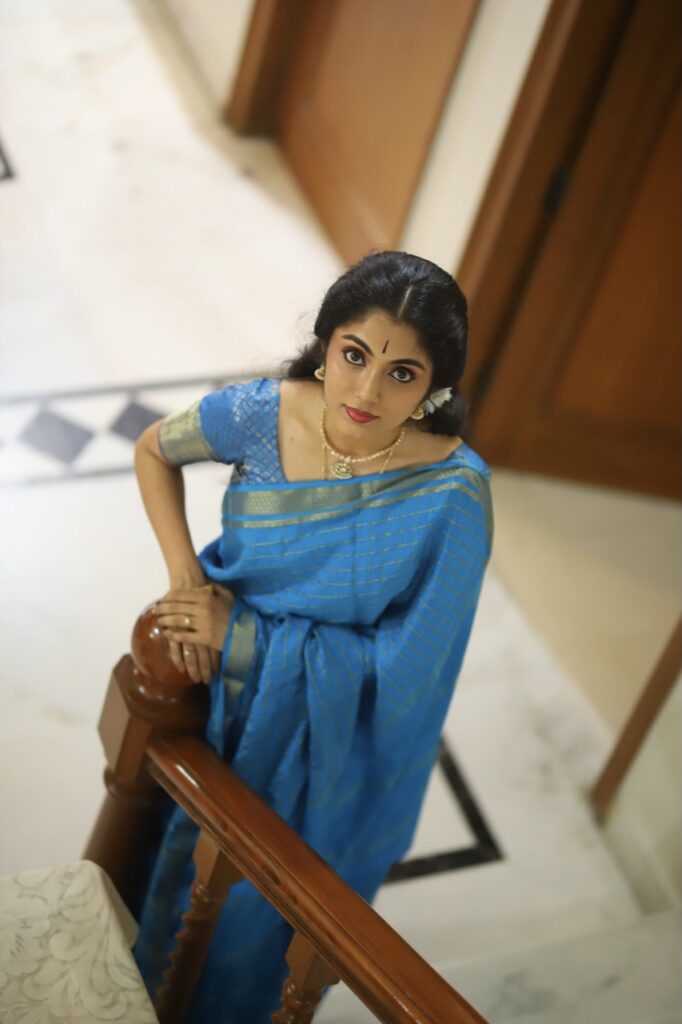
Smooth Transition: When Janata Curfew and later lockdown was announced, one enjoyed the downtime, says the dancer. “Watched Doordarshan serials of Ramayana and Mahabharata, played cards. But when it dawned that this was not going to end soon, we jumped back to work. That doesn’t mean we didn’t take classes. We were the first to switch to online mode of classes. The moment Janta Curfew was announced, we shifted to online classes. Our transition from physical to online classes was smooth. Since the past 18 months, we are conducting classes online. And slowly and cautiously opening to physical classes in smaller batches,” says the Varna Arts Academy founder.
Smitha confesses that she was never a fan of online performances. “But after a lot of persuasion by some organisers, I did accept some online performances. I am not comfortable to look into the camera and perform,” she says. Also, the dancer says that during the pandemic, she spent a lot of time reading and writing. The artist states that dance items presented by her or her students, have been totally choreographed, sung and the nattuvangam too has been played by her. “One must say that songs are traditional compositions.”
On the raging controversy that songs choreographed by senior and veteran dancers should not be used, Smitha says: “Permissions must be taken for performing them and due credit must be given to the concerned Guru which is of paramount importance. These days some dancers attend a workshop and tweak a song too much and present it. One must remember, choreography is awfully painstaking. And if somebody did that to my choreography, I would not like it.” She asks the youngsters learning the art form to take it forward in a more meaningful way.

Im thankful for the article post.Really looking forward to read more. Great.
Hello.This article was really motivating, particularly since I was looking for thoughts on this issue last Wednesday.
Muchos Gracias for your post.Really thank you! Keep writing.
I appreciate you sharing this article post.Really looking forward to read more. Much obliged.
Enjoyed every bit of your post. Much obliged.
I am so grateful for your blog article.Really looking forward to read more. Great.
Very neat article.Much thanks again. Much obliged.
I loved your article.Much thanks again.
In this retail environment, fashion brands need to develop new strategies to grab consumers attention by speaking to their hearts.
Appreciate you sharing, great blog article. Great.
Im obliged for the article post.Really thank you! Cool.
Looking forward to reading more. Great blog article.Much thanks again. Keep writing.
Very neat article.Thanks Again. Great.
magellan rx pharmacy help desk best online pharmacy forum
I appreciate you sharing this article.Much thanks again. Awesome.
Looking forward to reading more. Great blog.Really thank you! Fantastic.
I really liked your post.Really looking forward to read more.
Thanks-a-mundo for the article.Much thanks again. Want more.
I appreciate you sharing this post.Really thank you! Awesome.
I’m not sure where you’re getting your information, but good topic.I needs to spend some time learning more or understanding more.Thanks for wonderful info I was looking for this info formy mission.
Wow, great blog post.Much thanks again. Awesome.
Thank you for your blog.Really looking forward to read more. Cool.
Major thankies for the article.Thanks Again. Cool.
Very good article.Much thanks again. Really Cool.
Hello, all is going fine here and ofcourse every one is sharing information, that’s genuinely excellent, keep up writing.
Thank you for your blog article.Much thanks again. Fantastic.
Thanks so much for the blog.Much thanks again. Fantastic.
I really liked your article post. Really Cool.
I really enjoy the post.Really looking forward to read more. Want more.
Looking forward to reading more. Great blog article.Thanks Again. Keep writing.
Great blog post.Thanks Again. Much obliged.
Aw, this was a very nice post. Taking a few minutes and actual effort to create a good articleÖ but what can I sayÖ I hesitate a lot and never seem to get nearly anything done.
This is one awesome article post.Really thank you! Will read on…
Im thankful for the post. Great.
Major thanks for the blog article.Thanks Again.
I really like and appreciate your blog article.Much thanks again. Awesome.
Very informative blog post. Awesome.
Really appreciate you sharing this article.Much thanks again. Really Great.
I really liked your blog post. Cool.
I cannot thank you enough for the blog post.Much thanks again. Will read on…
Hey, thanks for the post. Fantastic.
Exceptional post however , I was wondering if you could write a litte more on this subject?I’d be very grateful if you could elaborate alittle bit more. Bless you!
Fantastic post.Really thank you! Want more.